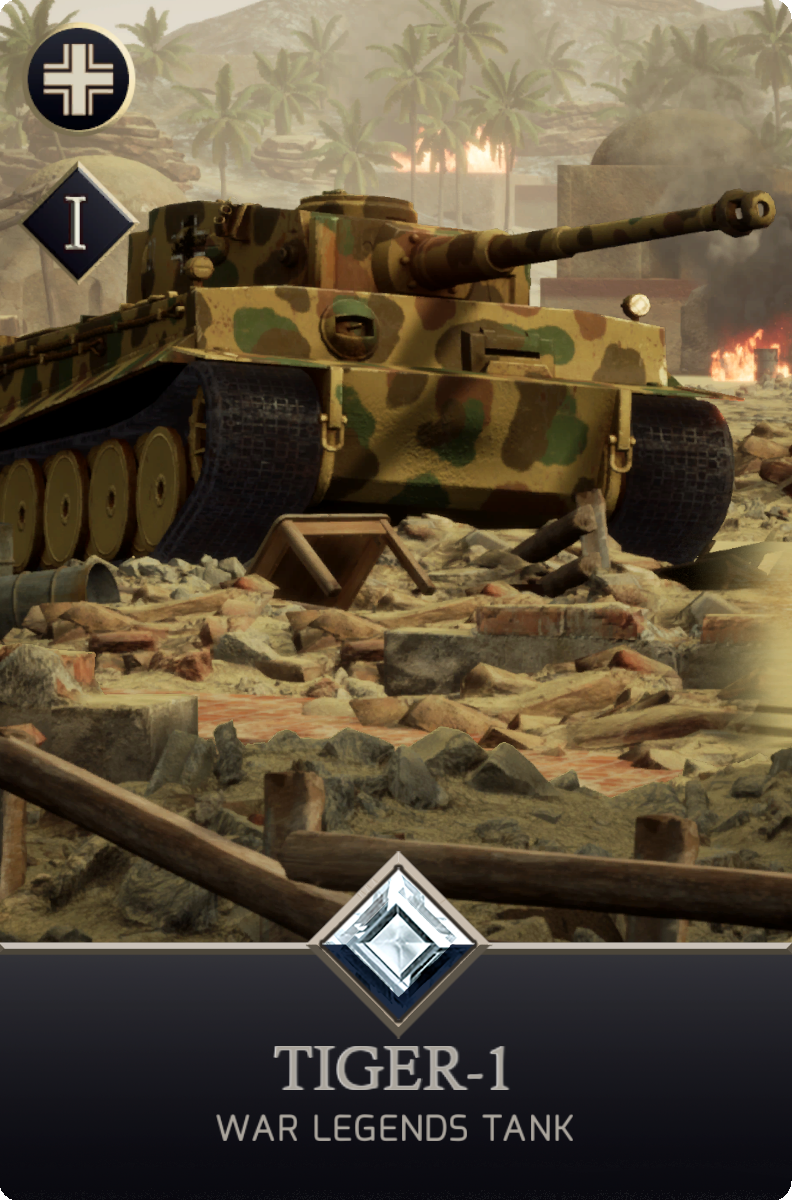


Tank Background
Developed in 1941 by Ferdinand Porsche to hunt down the Soviet kv1 and T34, the Panzerkampfwagen VI or colloquially known as the Tiger1 played a prominent role during the war as it was the spearhead of the German army against Soviet, British and American forces.
This tank was used during the Second World War, in Operation Barbarossa, on the African front and in the Battle of Kursk. It performed well and was prominently effective against the T-34 and KV1 in the latter two battles.
In the open field it was feared by the enemy, although in confined spaces such as urban environments it was clumsy due to its poor mobility, which made it vulnerable in these cases.
The development of this vehicle was tortuous due to circumstances such as Ferdinand Porsche's opposition to equipping the Tiger 1 with Rheinmetall's 88 mm Flak cannon, or the heavy weight of the armor as there was no reliable engine to move it at a reasonable speed, the lack of tungsten which made it impossible to manufacture projectiles and/or the bureaucracy which contributed to the delay in mass production of the model.
In 1937, development of the Tiger was started by Porsche, Daimler-Benz and MAN, but the vehicle developed was rendered obsolete by the appearance of the T-34 model, which was superior in characteristics, so the characteristics of the vehicle were rethought with superior armor and a more powerful gun.
Initially an order was placed for 6 prototypes manufactured in series by the tank design office. At this point only the tracks were available as, due to bureaucratic obstacles, Porsche had to make modifications to the chassis, hull and turret, the latter due to Krupp's request, its latest gun, the 88 mm L/56, which forced Porsche to make modifications to the dome to accommodate the gun and ammunition, as the new gun had different anchor points and fastenings and the ammunition was larger than estimated.
In the following months, Krupp presented a new 105 mm gun with a velocity of 840 m/s in order to obstruct Porsche's work, as Krupp was a competitor of Porsche and was interested in maintaining its arms monopoly, but this plan did not work out, as its new gun was rejected in favor of the 88 mm L/56, which had been presented earlier.
In addition to the choice of the 88 mm gun, it was decided that the chassis would be 60 mm thick at the sides and 80 mm thick at the front and would be equipped with the 3 turrets designed by Porsche.
Due to its technical complexity and expensive materials, the Tiger was produced in a total of 1347 units between 1942 and 1944. Another big problem of this tank was its costly maintenance, the difficulty of transporting it due to its interlocking track system and its propensity to become immobilized as a result of that peculiarity.








